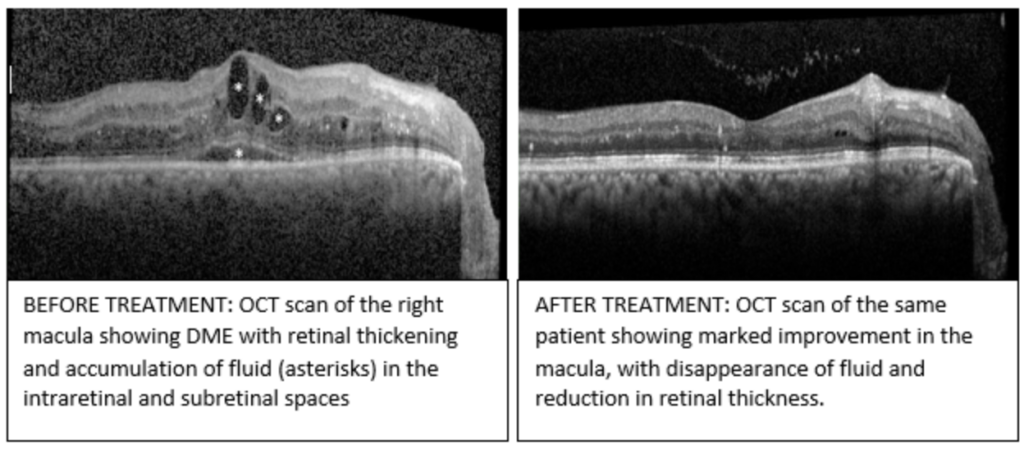The need for DME treatment depends on the severity as well as the location of the edema. Select cases may be managed conservatively with careful monitoring over a series of follow-up visits. More severe DME that is visually-threatening need early treatment. Traditionally, slit-lamp laser therapy was the gold standard for treatment of DME. However, it has now been largely replaced by intravitreal injection of anti-vascular endothelial growth factor (anti-VEGF) agents. If your doctor has advised for anti-VEGF injections, do bear in mind that treatment is usually over a prolonged period of time to achieve optimal results. The injections are usually initiated monthly for the first 3 months (loading phase), followed by further injections (maintenance phase) depending on the improvement seen. However, in contrast to intravitreal anti-VEGF injections in other eye conditions such as age-related macular degeneration (AMD), studies have shown that the number of injections needed gradually decreases after the first year. It is also especially important to optimize the other systemic co-morbidities to ensure the best outcome of your DME treatment.
